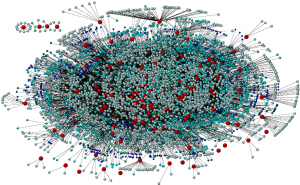 Online social networks (OSNs) like Facebook, Twitter, etc. are excellent media for viral marketing. One of the fundamental problems for viral marketing in OSNs is the influence maximization (IM) problem, where the company aims at reaching a widespread product adoption via word-of-mouth effect by providing free samples of a product to a set of influential individuals. In a graph G, IM can be restate as finding at most k seed nodes (influential individuals) that can influence the maximum number of nodes, either directly or indirectly. A variation of IM, the threshold activation problem (TAP), does not restrict the number of seed nodes. Instead, it aims at using minimum number of seed nodes to influence at least fraction of all nodes. As the graph is usually gigantic and also probabilistic, exact solutions to neither IM or TAP are accessible with reasonable computational resources. Thus, the solutions rely on sampling methods and the main objective of research is to design approaches to use less samples while maintaining solution quality.
Online social networks (OSNs) like Facebook, Twitter, etc. are excellent media for viral marketing. One of the fundamental problems for viral marketing in OSNs is the influence maximization (IM) problem, where the company aims at reaching a widespread product adoption via word-of-mouth effect by providing free samples of a product to a set of influential individuals. In a graph G, IM can be restate as finding at most k seed nodes (influential individuals) that can influence the maximum number of nodes, either directly or indirectly. A variation of IM, the threshold activation problem (TAP), does not restrict the number of seed nodes. Instead, it aims at using minimum number of seed nodes to influence at least fraction of all nodes. As the graph is usually gigantic and also probabilistic, exact solutions to neither IM or TAP are accessible with reasonable computational resources. Thus, the solutions rely on sampling methods and the main objective of research is to design approaches to use less samples while maintaining solution quality.
Objectives:
- Design efficient sampling methods for estimating influence spread in large-scale OSNs
- Study variations of IM, TAP (for example: by considering external influence or different diffusion models)
Selected Publications:
- . “TipTop: Almost Exact Solutions for Influence Maximization in Billion-Scale Networks,” in IEEE/ACM Transactions on Networking, 2019
- . “Influence Maximization at Community Level: A New Challenge with Non-Submodularity,” in IEEE ICDCS, 2019
- . “Fast Maximization of Non-Submodular, Monotonic Functions on the Integer Lattice,” in Proceedings of ICML, 2018